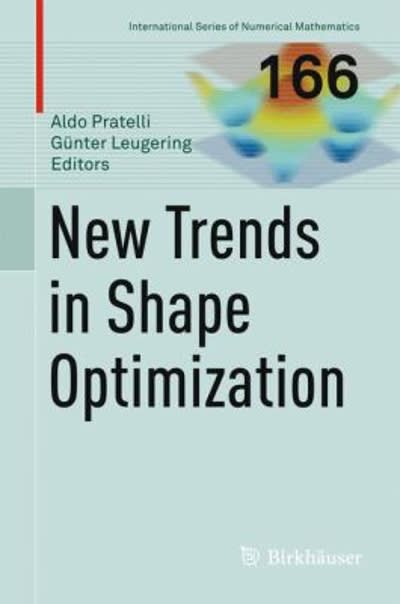Question
Irregular examples of 100 benefactors from every one of three unique eateries were asked which dinner they bought. The outcomes are appeared in the table
Irregular examples of 100 benefactors from every one of three unique eateries were asked which dinner they bought. The outcomes are appeared in the table beneath. Round each response to precisely three decimal spots.
Caf A Restaurant B Restaurant C Total
Breakfast 26 29 43 98
Lunch 53 27 33 113
Dinner 21 44 24 89
Total 100 100 100 300
On the off chance that one supper is picked aimlessly,
Discover P( breakfast ):
Discover P( lunch and Restaurant C ):
Discover P( supper or Restaurant A ):
Discover P( Restaurant B | lunch ):
Which of coming up next are totally unrelated occasions from the table above?:
Caf C and Restaurant A
Breakfast and Restaurant B
Caf An and Dinner
An examination is moving two dice.
SS = {(1,1), (1,2), (1,3), (1,4), (1,5), (1,6), (2,1), (2,2), (2,3), (2,4), (2,5), (2,6),
``4``
(3,1), (3,2), (3,3), (3,4), (3,5), (3,6), (4,1), (4,2), (4,3), (4,4), (4,5), (4,6),
(5,1), (5,2), (5,3), (5,4), (5,5), (5,6), (6,1), (6,2), (6,3), (6,4), (6,5), (6,6)}
a. What is the likelihood of getting an amount of 9 or an amount of 6?
P(sum of 9 or amount of 6) =
Offer your response as a decreased part.
b. What is the likelihood of getting first kick the bucket is a 5?
P(first kick the bucket is 5) =
Offer your response as a diminished portion.
c. What is the likelihood of getting an amount of 9 and first bite the dust is a 4?
P(sum of 9 and first pass on is a 4) =
Offer your response as a diminished part.
d. What is the likelihood of getting first kick the bucket is a 4 given that you as of now have an amount of 8?
P(first kick the bucket is a 4 given amount of 8) =
Offer your response as a decreased portion.
An exceptional deck of cards has ten cards. Three are green (G), four are blue (B), and three are red (R). At the point when a card is picked, the shade of it is recorded. A test comprises of first picking a card and afterward flipping a coin, which lands on heads (H) or tails (T).
1. Rundown the example space. (Enter your answer utilizing letter mixes isolated by commas. Model: GH, GT, ...)
2. Leave An alone the occasion that a blue card is picked first, trailed via handling a head on the coin throw. Discover P(A). (Enter your likelihood as a small portion.)
P(A) =
3. Leave B alone the occasion that a red or green is picked, trailed via handling a head on the coin throw. Are the occasions An and B totally unrelated? Clarify your answer in one to three complete sentences, including mathematical avocation. (Enter your likelihood as a small portion.)
4. Leave B alone the occasion that a red or green is picked, trailed via handling a head on the coin throw. Are the occasions An and B totally unrelated? Clarify your answer in one to three complete sentences, including mathematical legitimization. (Enter your likelihood as a small portion.)
An and B are not totally unrelated in light of the fact that they can can't occur simultaneously. Consequently,
P(A and B) =
5. Leave C alone the occasion that a red or blue is picked, trailed via handling a head on the coin throw. Are the occasions An and C totally unrelated? Clarify your answer in one to three complete sentences, including mathematical defense. (Enter your likelihood as a small portion.)
An and C are not fundamentally unrelated in light of the fact that they can can't occur simultaneously. In this way,
P(A and C) =
(When requested a likelihood make certain to utilize the structure P( ) = in your answer. Make certain to work out the occasion inside the enclosures rather than a letter. Give probabilities adjusted to in any event three decimal spots or one decimal spot whenever changed over to a percent.Or you can leave the likelihood as a decreased part.)
1. A test is rolling a reasonable pass on and afterward flipping a reasonable coin. Show work.
(a) State the example space.
(b) Find the likelihood of getting a head. Express the occasion space.
(c) Find the likelihood of getting a 6. Express the occasion space.
(d) Find the likelihood of getting a 6 or a head. Express the occasion space.
(e) Find the likelihood of getting a 3 and a tail.State the occasion space.
Step by Step Solution
There are 3 Steps involved in it
Step: 1

Get Instant Access to Expert-Tailored Solutions
See step-by-step solutions with expert insights and AI powered tools for academic success
Step: 2

Step: 3

Ace Your Homework with AI
Get the answers you need in no time with our AI-driven, step-by-step assistance
Get Started


